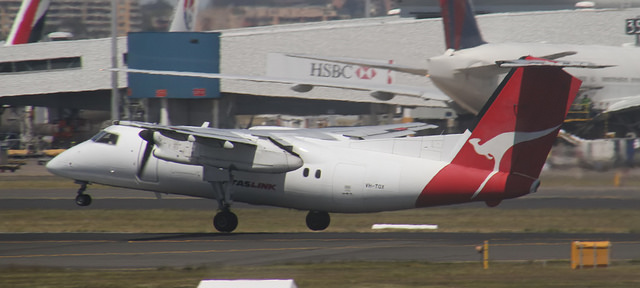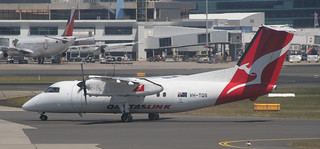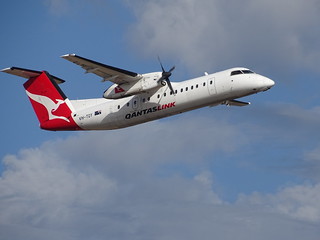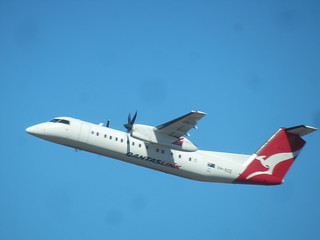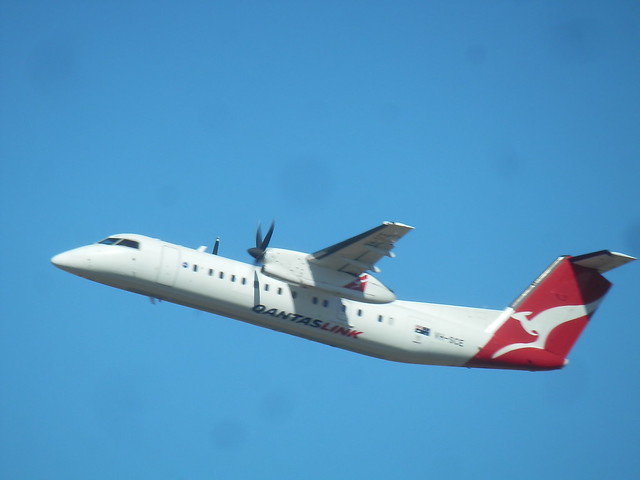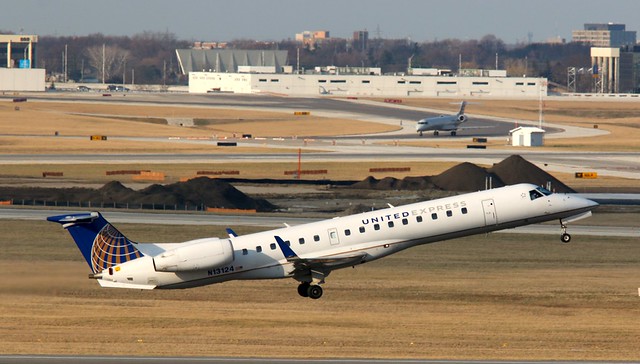Eastern Australia DH8C at Tamworth on Jan 15th 2021, incorrect takeoff data
Last Update: September 30, 2021 / 15:00:17 GMT/Zulu time
Incident Facts
Date of incident
Jan 15, 2021
Classification
Report
Airline
Eastern Australia Airlines
Flight number
QF-7
Departure
Tamworth, Australia
Destination
Sydney, Australia
Aircraft Registration
VH-TQE
Aircraft Type
De Havilland Dash 8 (300)
ICAO Type Designator
DH8C
On Sep 30th 2021 Australia's ATSB released their final report concluding the probable causes of the incident were:
- The flight crew misread the aircraft’s fuel gauges after arrival at Tamworth probably as a result of distraction. This created an inaccurate mental model of the fuel quantity on board which, in turn, hampered identification of this error during subsequent pre-flight preparations for departure.
- The incorrect fuel figure was used in pre-flight documentation and data entry inputs resulting in the aircraft departing Tamworth with inaccurate load, take-off, and fuel management data.
The ATSB summarized the sequence of events:
At about 1658 Eastern Daylight-saving Time on 15 January 2021, a QantasLink Bombardier Dash-8-315 aircraft, registered VH-TQE, arrived at Tamworth Regional Airport, New South Wales. The aircraft was operating as a scheduled passenger service from Sydney to Tamworth with 23 passengers, and then returning to Sydney with 29 passengers at a planned departure time of 1740. The crew comprised the captain (ATPL, 2650 hours total, 1288 hours on type, 83 thereof in command), first officer (FO, CPL, 1706 hours total, 346 hours on type) and two cabin crew. The captain was pilot flying (PF) and the FO was pilot monitoring for both sectors.
Shortly after parking the aircraft at Tamworth, the captain left their seat and stood at the doorway between the flight deck and cabin. There had been thunderstorms while approaching Tamworth and the captain thought the disembarking passengers might have questions about the arrival.
The FO remained on the flight deck and finalised the records for the completed flight. As part of this task, the FO read the analogue gauges of the two fuel tanks as indicating a total remaining fuel quantity of 3,830 pounds (see the section titled Fuel gauges). The FO recorded this quantity as the shutdown fuel in the flight record without completing the required fuel quantity validation check (see the section titled Standard operating procedures).
Soon after, the FO provided the captain with the flight record to cross check the information entered. The captain recalled checking the fuel gauges and mentally calculating the total fuel to be about 3,820 pounds. The captain also omitted the fuel quantity validation check, and the FO then submitted the flight record electronically.
Shortly afterwards, the flight crew started completing the flight record for the return flight to Sydney and, as the aircraft did not require refuelling, entered a fuel figure of 3,830 pounds. The FO and captain then began their assigned ‘before start' checks. One of the captain’s assigned checks was to physically verify the fuel quantity. The captain, however, recalled the fuel quantity from memory and entered that figure (3,820 pounds) into the aircraft’s flight management system (FMS) without verifying it.
The captain later completed the departure briefing using the same fuel figure. Following the departure briefing, the captain and FO undertook the ‘before start' checklist. This involved cross checking items, with the FO reading each item in the checklist and the captain actioning them.
The captain recalled looking at the fuel gauges for the fuel quantity check but again relied on memory to read out the fuel figure.
As the aircraft’s load sheet weight data was in kilograms, the flight crew converted the fuel figure into kg (3,820 pounds to 1,733 kg). The load sheet for the return flight was submitted at 1714, recording a total fuel on board of 1,733 kg and a take-off weight of 16,908 kg. The flight crew then used this take-off weight to calculate the aircraft’s take-off data, and at 1735, the aircraft departed Tamworth (see the section titled Load, take-off and fuel management data).
At about 1750, the aircraft reached its assigned cruise level. Shortly after, the flight crew identified a fuel data mismatch during the procedural fuel check for that stage of the flight. They soon established that the fuel quantity used for all pre-flight activities and tasks had been incorrect (the correct fuel figure had been about 3,081 pounds). The fuel figure within the FMS was then amended, the aircraft load data recalculated, and sufficient fuel for the flight was verified.
The aircraft completed the flight to Sydney without further incident and the fuel figure error was reported by the flight crew on arrival. The fuel remaining on board the aircraft in Sydney was reconciled correctly and no defect with the fuel system or instrumentation was identified.
The ATSB analysed:
Both the captain and FO described experiencing a physiological response to the Tamworth arrival, which persisted throughout the pre-flight preparations for departure. This physiological distraction probably degraded their attentional focus and resulted in the initial misinterpretation of the fuel gauges. Additionally, the captain had limited experience on the Q300 aircraft in which the flight crew was required to mentally calculate the total fuel on board. This additional cognitive step probably increased the chance of the error and made it more difficult to identify the error once it had occurred.
As a result of the actions during the initial fuel quantity identification, the captain and FO formed an incorrect mental model of the aircraft’s fuel state. This, coupled with ongoing reduced attentional focus, probably led them to recall the incorrect fuel figure during subsequent pre-flight activities. The same factors probably influenced the flight crew’s cross checks and contributed to the captain and FO omitting procedural checks aimed at capturing fuel quantity errors. Consequently, neither identified the error until the aircraft was airborne, when they followed procedures by seeking out new information during the cruise fuel check.
Incident Facts
Date of incident
Jan 15, 2021
Classification
Report
Airline
Eastern Australia Airlines
Flight number
QF-7
Departure
Tamworth, Australia
Destination
Sydney, Australia
Aircraft Registration
VH-TQE
Aircraft Type
De Havilland Dash 8 (300)
ICAO Type Designator
DH8C
This article is published under license from Avherald.com. © of text by Avherald.com.
Article source
You can read 2 more free articles without a subscription.
Subscribe now and continue reading without any limits!
Read unlimited articles and receive our daily update briefing. Gain better insights into what is happening in commercial aviation safety.
Send tip
Support AeroInside by sending a small tip amount.
Related articles
Eastern Australia DH8C at Mildura on Jun 6th 2023, near collision on runway with private aircraft
An Eastern Australia de Havilland Dash 8-300 on behalf of Qantas, registration VH-TQH performing flight QF-1402 from Mildura,VI to Sydney,NS…
Eastern Australia DH8B at Lord Howe Island on Mar 29th 2024, engine shut down in flight
An Eastern Australia de Havilland Dash 8-200 on behalf of Qantas, registration VH-TQX performing flight QF-2263 from Lord Howe Island,NS to Sydney,NS…
Eastern Australia DH8B at Sydney on Nov 8th 2022, radar altimeter failure, problems with both engines, brakes fire
An Eastern Australia Airlines de Havilland Dash 8-200 on behalf of Qantas, registration VH-TQS performing flight QF-2265 from Lord Howe Island,NS to…
Eastern Australia DH8C near Mildura on Jan 30th 2022, loss of cabin pressure
An Eastern Australia de Havilland Dash 8-300 on behalf of Qantas, registration VH-TQY performing flight QF-2084 from Melbourne,VI to Mildura,VI…
Eastern Australia DH8C near Whyalla on Aug 8th 2019, inflight deployment of ditching dam
An Eastern Australia de Havilland Dash 8-300 on behalf of Qantas, registration VH-SCE performing flight QF-2073 from Adelaide,SA to Whyalla,SA…
Newest articles
The GPS Problem No One Wants to Discuss in 2026
GPS is widely perceived as a solved problem. It works, it’s global, and it underpins everything from smartphones to financial systems. Yet in…
Commute ERJ145 at Washington on Jan 12th 2026, engine shut down in flight
A Commute Air Embraer ERJ-145 on behalf of United, registration N13124 performing flight UA-4295 from Washington Dulles,DC to Mobile,AL (USA) with 43…
Subscribe today
Are you researching aviation incidents? Get access to AeroInside Insights, unlimited read access and receive the daily newsletter.
Pick your plan and subscribePartner

ELITE Simulation Solutions is a leading global provider of Flight Simulation Training Devices, IFR training software as well as flight controls and related services. Find out more.
SafetyScan Pro provides streamlined access to thousands of aviation accident reports. Tailored for your safety management efforts. Book your demo today
AeroInside Blog
Popular aircraft
Airbus A320Boeing 737-800
Boeing 737-800 MAX
Popular airlines
American AirlinesUnited
Delta
Air Canada
Lufthansa
British Airways




